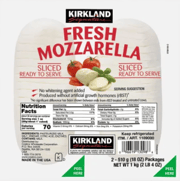
What used to be a minor inconvenience could now become a life-threatening crisis. That urinary tract infection, that small cut that gets infected, that bout of pneumonia—these everyday health challenges are becoming increasingly dangerous for Americans over 60, and the latest global health warnings should have all of us paying attention.
The World Health Organization just sounded an urgent alarm about drug-resistant bacterial infections, revealing that one in six laboratory-confirmed bacterial infections worldwide now shrugs off standard antibiotic treatments.
But here's what makes this particularly concerning for American seniors: roughly 40% of the deaths caused by the most common antibiotic-resistant infections occur in Americans 65 years and older—a staggering proportion considering this age group represents only 15% of the US population.
The American reality: Numbers that demand attention
While the WHO's global statistics paint a concerning picture, the situation for American seniors is even more alarming.
More than 2.8 million antimicrobial-resistant infections occur each year in the US, and the burden falls disproportionately on older adults.
In 2017, more than 11,000 Americans 65 and over died from community- and hospital-onset invasive infections caused by six resistant bacterial pathogens.
The financial toll is equally sobering: infections caused by bacteria resistant to multiple antibiotics led to $1.9 billion in health care costs, more than 400,000 days in the hospital, and more than 10,000 deaths among older adults across the US in 2017.
"We know this age group is more vulnerable to infectious diseases, because their immunity goes down with age and they have more chronic medical conditions."
Also read: Common painkillers could be making antibiotics less effective, scientists warn
Why seniors are sitting ducks for superbugs
The reasons older adults face such elevated risks go far beyond simple statistics.
Aging-related factors like immunosenescence, frailty, and multimorbidity increase the burden of infections from multidrug-resistant organisms in this population.
Think of it this way: as we age, our immune systems naturally weaken—a process called immunosenescence.
Combined with the reality that many seniors manage multiple chronic conditions and take various medications, the body's ability to fight off infections diminishes significantly.
The most dangerous resistant bacteria for seniors
MRSA (Methicillin-resistant Staphylococcus aureus): Can cause pneumonia, bloodstream infections, and surgical site infections
E. coli: Resistant strains cause difficult-to-treat urinary tract and bloodstream infections
Klebsiella pneumoniae: Often causes pneumonia and bloodstream infections in healthcare settings
Carbapenem-resistant Enterobacterales: Last-resort antibiotic treatments often fail against these bacteria
The living situations common among older adults compound these risks.
Long-term care facilities have become "reservoirs of resistance" where multidrug-resistant pathogens are frequently recovered due to frequent antibiotic use.
For seniors in these facilities, the risk of developing an infection is 32.7%.
Also read: Is this deadly ancient illness becoming impossible to cure? Shocking new mutation threatens millions
From hospitals to your neighborhood
One of the most concerning trends is that these dangerous infections are no longer confined to hospitals.
Research shows that a significant portion of resistant infections now originate in community settings—the very places where seniors live their daily lives.
The WHO's latest data reveals troubling resistance patterns that affect the infections seniors commonly face.
For urinary tract infections—something many older adults deal with regularly—resistance to commonly used antibiotics now typically exceeds 30% globally.
More than 40% of E. coli infections are now resistant to third-generation cephalosporins, which doctors consider the first-choice treatment for serious bloodstream infections.
Did you know?
Did you know?
During the COVID-19 pandemic, antibiotic-resistant hospital infections increased by 20% compared to pre-pandemic levels, and the gains made in fighting resistance were significantly set back due to increased antibiotic use and disrupted prevention programs.
Also read: These subtle skin signs could point to a deadly, hidden condition
What you can do to protect yourself
Smart antibiotic use is your first line of defense.
Never pressure your doctor for antibiotics when they're not needed, and if prescribed antibiotics, take the full course exactly as directed—even if you feel better. Stopping early can allow surviving bacteria to develop resistance.
Infection prevention becomes even more critical. Regular handwashing remains one of the most effective strategies. Keep cuts and wounds clean and covered.
Stay up to date with vaccinations, including pneumonia and flu shots, which can prevent infections that might otherwise require antibiotic treatment.
Be proactive about healthcare communication. When visiting healthcare facilities, don't hesitate to ask staff if they've washed their hands. If you're prescribed antibiotics, ask why they're necessary and whether a culture test might help determine the most effective treatment.
Protecting yourself from resistant infections
- Take antibiotics exactly as prescribed and complete the full course.
- Practice excellent hand hygiene and wound care.
- Stay current with recommended vaccinations.
- Ask healthcare providers about hand hygiene and infection control measures.
- Don't share antibiotics or save leftover pills.
- Consider getting culture tests when appropriate to guide antibiotic selection.
Also read: Could a simple blood test reveal who’s more likely to experience fast-developing Alzheimer’s?
The healthcare system fights back
Healthcare systems are implementing new strategies to combat this growing threat.
Antimicrobial stewardship programs—essentially teams that ensure antibiotics are used appropriately—are becoming standard in hospitals and increasingly in nursing homes.
Advanced diagnostic tools are being developed to quickly identify resistant bacteria, allowing doctors to prescribe the right antibiotic from the start rather than using a trial-and-error approach.
Some facilities are even using specialized cleaning protocols and isolation procedures to prevent the spread of resistant organisms.
Also read: A 30-year wait ends: New antibiotic offers relief for millions struggling with UTIs
The path forward
The challenge of antibiotic resistance won't be solved overnight, but progress is being made on multiple fronts.
Researchers are developing new classes of antibiotics, though the pipeline remains concerning.
Alternative approaches like bacteriophage therapy—using viruses that specifically target harmful bacteria—show promise for the future.
Policy makers are also taking notice.
The federal government is considering new approaches to incentivize antibiotic development and improve stewardship programs, particularly given the significant burden these infections place on Medicare.
What This Means For You
The sobering reality is that the golden age of antibiotics—when a simple prescription could cure most bacterial infections—is largely behind us. But knowledge is power, and understanding these risks allows seniors to take protective steps while healthcare systems and researchers work on longer-term solutions.
Read next:
- The first new antibiotic in years has been approved—what it means for you
- Millions are taking it, but this antibiotic could be deadly–What happened?
- Exposed: The top fast food chains pumping your favorite meals with antibiotics - Is your favorite on the list?
What's your experience been with antibiotic treatments lately? Have you noticed doctors being more cautious about prescribing them, or have you had to deal with infections that seemed harder to treat than expected?
Share your thoughts and experiences in the comments below—your insights might help others navigate these challenging health waters.
Primary Source
https://www.cbsnews.com/news/superbugs-drug-resistant-spread-surging-who/
Study highlights impact of antibiotic resistance on older Americans | CIDRAP
Cited text: New research shows that roughly 40% of the deaths caused by the most common antibiotic-resistant infections occur in American 65 years and older.
Excerpt: roughly 40% of the deaths caused by the most common antibiotic-resistant infections occur in Americans 65 years and older
https://www.cidrap.umn.edu/study-highlights-impact-antibiotic-resistance-older-americans
Federal Action Needed to Address Antibiotic Resistance in Older Americans | The Pew Charitable Trusts
Cited text: According to the most recent antibiotic resistance report from the Centers for Disease Control and Prevention (CDC), in 2017 six common antibiotic-res...
Excerpt: 15% of the U.S. population
https://www.pew.org/en/research-and...ress-antibiotic-resistance-in-older-americans
Antimicrobial Resistance Facts and Stats | Antimicrobial Resistance | CDC
Cited text: In the U.S., more than 2.8 million antimicrobial-resistant infections occur each year.
Excerpt: More than 2.8 million antimicrobial-resistant infections occur each year in the U.S.
https://www.cdc.gov/antimicrobial-resistance/data-research/facts-stats/index.html
Study highlights impact of antibiotic resistance on older Americans | CIDRAP
Cited text: In a study published today in Clinical Infectious Diseases, researchers estimated that in 2017, more than 11,000 Americans 65 and over died from commu...
Excerpt: In 2017, more than 11,000 Americans 65 and over died from community- and hospital-onset invasive infections caused by six resistant bacterial pathogens
https://www.cidrap.umn.edu/study-highlights-impact-antibiotic-resistance-older-americans
Drug-resistant Infections Led to $1.9 Billion in Health Care Costs, More Than 10,000 Deaths Among Older Adults in One Year
Cited text: Infections caused by bacteria resistant to multiple antibiotics led to $1.9 billion in health care costs, more than 400,000 days in the hospital and m...
Excerpt: infections caused by bacteria resistant to multiple antibiotics led to $1.9 billion in health care costs, more than 400,000 days in the hospital and more than 10,000 deaths among older adults across the U.S. in 2017
https://www.idsociety.org/news--pub...-10000-deaths-among-older-adults-in-one-year/
Antibiotic Resistance in the Elderly: Mechanisms, Risk Factors, and Solutions - PMC
Cited text: This review focuses on the mechanisms underlying resistance in key bacterial pathogens and highlights how aging-related factors like immunosenescence,...
Excerpt: Aging-related factors like immunosenescence, frailty, and multimorbidity increase the burden of infections from multidrug-resistant organisms in this population
https://pmc.ncbi.nlm.nih.gov/articles/PMC11509523/
Taking stock of infections and antibiotic resistance in the elderly and long-term care facilities: A survey of existing and upcoming challenges - PMC
Cited text: As a result of antibiotic use, LTCFs have become “reservoirs of resistance” and multi-drug resistant (MDR) pathogens are frequently recovered.
Excerpt: Long-term care facilities have become "reservoirs of resistance" where multi-drug resistant pathogens are frequently recovered
https://pmc.ncbi.nlm.nih.gov/articles/PMC3906614/
Taking stock of infections and antibiotic resistance in the elderly and long-term care facilities: A survey of existing and upcoming challenges - PMC
Cited text: In LTCFs, the mean age of residents who suffer from an infectious disease syndrome is >80 years and the risk of developing an infection is 32.7% [9...
Excerpt: the risk of developing an infection is 32.7%
https://pmc.ncbi.nlm.nih.gov/articles/PMC3906614/
Taking stock of infections and antibiotic resistance in the elderly and long-term care facilities: A survey of existing and upcoming challenges - PMC
Cited text: In LTCFs, the mean age of residents who suffer from an infectious disease syndrome is >80 years and the risk of developing an infection is 32.7% [9].
Excerpt: the risk of developing an infection is 32.7%
https://pmc.ncbi.nlm.nih.gov/articles/PMC3906614/






